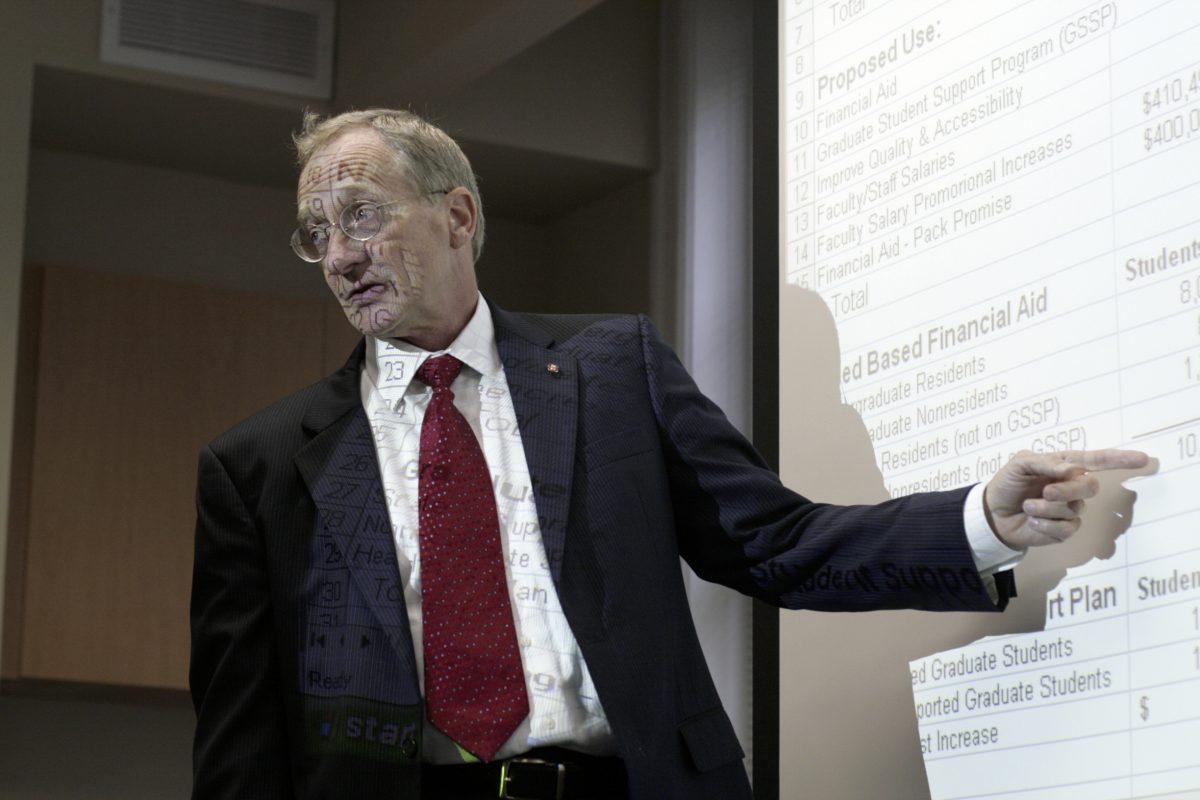The Tuition Advisory Committee will vote on a proposal next week to increase tuition by 3.6 percent for in-state undergraduate students next year, and after Student Body President Jay Dawkins made a similar proposal, he said he was happy with the result.
“If it goes well, N.C. State students will get an N.C. State-quality education that beats inflation, and that is exciting,” Dawkins, a senior in civil engineering and co-chair of the committee, said.
If the committee recommends the 3.6 percent increase, it will still have to pass through the Chancellor, Board of Trustees and Board of Governors for approval.
The plan would increase tuition by $140 for in-state undergraduates and all graduate students and $280 for out-of-state undergraduates, according to Provost and Executive Vice Chancellor Larry Nielsen, but it is lower than the possible 6.5 percent cap for tuition and fees.
“I think there’s a rationale for it,” Nielsen said. “It’s not at the maximum that we [could have] asked for. It respects the overall picture for the economy.”
Dawkins’ proposal emphasized that while the average family incomes in North Carolina increased by 2.8 percent from 1998 to 2008, the average change in tuition in that time period was 9.2 percent.
The average family income fell 1.4 percent last year, his proposal stated, and the tuition rate could increase by an “arbitrary” 6.5 percent.
“Our proposal was that, while University costs are rising, it is unfair to get those costs directly onto students at an unreasonable rate,” Dawkins said.
Nielsen said tuition increases are necessary to continue to provide quality education.
He said during the meeting that, relative to the University’s peer institutions, tuition is low.
“General Administration says UNC schools must be in the bottom 25 percent of peer institutions,” he said.
The proposal for a 3.6 percent increase appreciates the needs of the University and the students, Nielsen said.
“The student representatives on the committee have been exceptionally responsible and it’s been a pleasure to do this,” he said. “I hope next week we can pass this recommendation or something like it.”
Nielsen said the collaboration between students and faculty members was extremely important in trying to find a solution.
The highest that the University could increase tuition and fees would be 6.5 percent for each, and according to the Cashier’s Office Web site, the current cost for required tuition and fees for an undergraduate, in-state student is $2,637.
Twenty-five percent of tuition goes to faculty salaries, Nielsen said, and if the 3.6 percent plan is approved, over 37 percent of the tuition collected would go to financial aid.








